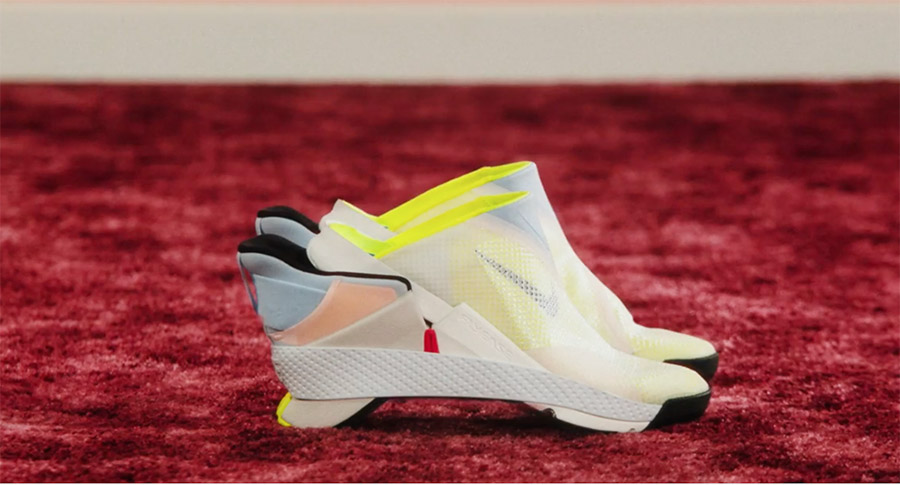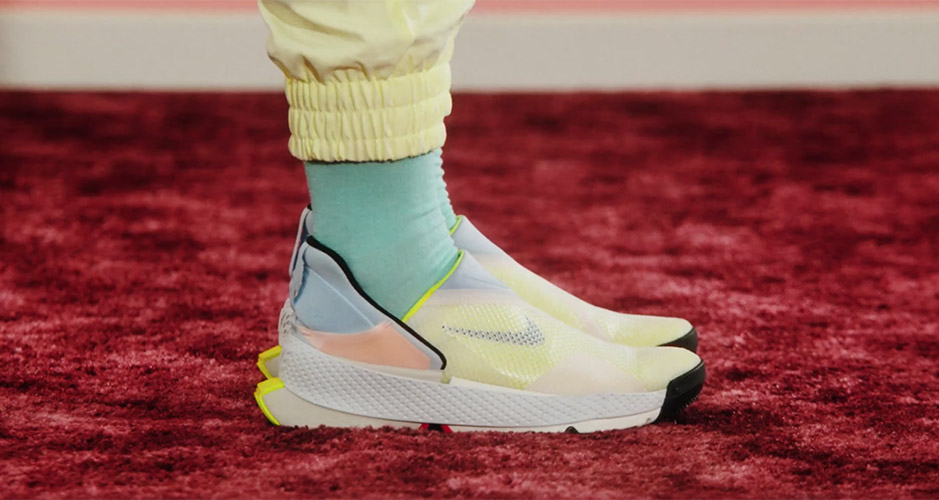Nike’s sales in the third quarter ended February 28 came in below Wall Street’s targets as container shortages and port delays impeded the North America wholesale business. However, Nike said demand for its products remains strong, and inventory flows are expected to improve, with much of the third quarter’s miss expected to be made up in its fourth quarter.
On a conference call with analysts, CFO Matt Friend said the company is “now more confident” in its full-year outlook for revenue that called for sales to expand mid-teens growth versus the prior year.
Specifically, for the fiscal fourth quarter:
- Revenue is expected to expand 75 percent against the year-ago period most impacted by the arrival of the pandemic. Compared to the third quarter, the improvement also reflects government-mandated restrictions in Europe starting to ease in April and inventory transit time slowly improving in North America;
- Gross margins are expected to expand up to 75 basis points year-over-year, reflecting continued shifts to its more profitable Nike Direct business, partially offset by higher logistics and freight costs and higher markdowns to liquidate excess inventory in EMEA; and
- SG&A dollars are expected to be up slightly year-over-year as marketing spend is rebuilt toward pre-pandemic levels, and investments continue to accelerate the pace of its digital transformation.
Highlights for the third quarter included Greater China, where revenues grew 42 percent on a currency-neutral basis. Nike Digital grew 54 percent, led by strong growth across the brand’s mobile app ecosystem. Sales on the NIKE app vaulted 90 percent.
Women’s drove over-indexing revenue growth for the quarter, including nearly 90 percent growth in Nike Digital. Jordan Brand continued its recovery, growing 15 percent for its third consecutive quarter of double-digit growth.
Earnings also topped Wall Street’s targets due to better-than-expected gross margins and expense rates.
Earnings Top Wall Street Targets
Net earnings climbed 71.1 percent to $1.45 billion, or 90 cents a share, well above Wall Street’s consensus estimate of 76 cents. The prior year included a 25 cents-per-share charge associated with its transition to a strategic distributor model in South America.
Gross margins increased 130 basis points to 45.6 percent. Margins benefited from higher full-price sales, geographic mix, and a higher mix of digital, which carries a higher gross margin rate. Optimization of new pricing capabilities using advanced analytics in North America also contributed to the margin gains.
SG&A declined 7 percent in the quarter overall and 29.4 percent of sales from 32.5 percent a year ago. The improvement reflected certain marketing initiatives being shifted to better align with product delivery timelines and market conditions with lower operating overhead due primarily to lower wage-related costs and continued expense management.
Sales, however, were up 2.5 percent to $10.4 billion, short of Wall Street’s consensus estimate of $11.03 billion. Currency-neutral sales were down one percent on a currency-neutral basis. Nike Direct grew 16 percent led by strong Nike digital growth offset by declines in its wholesale business due to the timing of wholesale shipments caused by global supply chain challenges in North America and mandatory store closures in EMEA.
Three-Week Inventory Delays Hit North America
Friend said sales were impacted by “short-term volatility” tied to COVID-19. Container shortages, transportation delays and port congestion interrupted the flow of inventory supply, resulting in “supply shortages relative to continued strong marketplace demand.”
In North America specifically, inventory supply was delayed by more than three weeks, impacting the timing of wholesale shipments and growth in the quarter. The North America region’s revenue declined 10 percent. In the EMEA region, additional COVID-19-related lockdowns caused a higher number of physical stores to be closed and/or operate on reduced hours versus the prior quarter.
Friend nonetheless said Nike’s “brand momentum is as strong as ever,” translating into double-digit retail sales growth over the holiday season on a higher proportion of full-price sales with lower markdown activity. He added, “And this retail momentum has continued into the spring season.”
On the call, John Donahoe, president and CEO noted that Nike remains consumers’ number one favorite brand in all 12 of its key cities in both men’s and women’s businesses.
“We also see strong connections in Greater China where our portfolio of brands, including Jordan and Converse, is helping to extend our leadership position,” said Donahoe. “All over the world, the relationships we have with consumers cannot easily be replicated.”

Donahoe said Nike continues to benefit from its connections with consumers, helped by its extensive partnerships with star athletes across sports and leagues, and the brand’s commitment to innovation. Among the launches he called out were the ZoomX Invincible Run, shown below, React Escape and Cosmic Unity and the Nike Go FlyEase, shown above and lead.

He said innovation success continues to be helped by consumer insights, and Nike’s acquisition of Datalogue, a data integration platform, to further help the company analyze such data. He said, “Thanks to our scale advantage, this lets us harness the full power of our data, turning it into more actionable insights and enabling greater speed.”
He added that as part of organizational realignment launched last summer, data teams were placed alongside creative teams to also better tap the benefits of data. Donahoe said, “Nike has always married the art and science of product creation, and the move toward deeper and more dynamic insights with our talent and investments, data science and machine learning, creates a capacity that no other brand has.”
Digital Growth Expands 54 Percent In Q4
Digital again led growth for the company, benefiting from quickly pivoting toward digital as the pandemic emerged with year-to-date owned growth ahead 70 percent. The 54 percent growth on a currency-neutral basis during the quarter was led by North America, which had its first quarter with $1 billion in digital revenue and aided by Nike member interactions.
Overall, Nike’s online sales mix from owned and partnered websites exceeded 35 percent of the total business, up ten basis points year-over-year. Said Friend, “Looking ahead to fiscal 2022 and beyond, we expect digital to continue to be our fastest-growing marketplace channel with digital mix increasing toward our 50 percent vision.”
Other digital highlights in the quarter included:
- Nike saw an over 60 percent increase in monthly engaged users for the quarter, led by its SNKRS app seeing four times the engagement in monthly active users versus last year.
- Member growth continued to outpace total digital growth as buying members increased 80 percent versus the prior year. Member demand penetration rates also saw meaningful increases at the store level, enabled by robust store training programs, member-specific promotions and enhanced account-linking capabilities. Said Donahoe, “This is critical as we strategically focus on better serving and driving repeat engagement with active high-value members across all of our channels.”
- SNKRS live, its first product drop via live streaming, has seen an average viewing duration of 15 minutes. Launched in the fiscal second quarter, SNKRS live doubled the number of countries it offered, including Japan, Germany and Italy.
North America Q3 Revenues Slide 11 Percent
By region, North American sales declined 11 percent on a currency-neutral basis, and EBIT increased 4 percent on a reported basis. Strong retail sales growth over the holiday and efforts earlier last year to mitigate inventory risks drove clean marketplace inventory. However, starting in late December, container shortages and West Coast port congestion began to increase inventory supply transit times by more than three weeks, according to Friend.
The result was a lack of available supply, delayed shipments to wholesale partners and lower-than-expected quarterly revenue growth. Said Friend, “We expect to capture this delayed revenue in the fourth quarter.”
On the positive side, NIKE direct in the third quarter grew 15 percent on a currency-neutral basis, led by Nike digital growth of more than 50 percent, and momentum has continued into March.
“This quarter, we accelerated analytics capabilities to dynamically adjust pricing and fulfillment alternatives as we balance consumer demand, inventory availability and profitability,” said Friend. “We also prioritized available product supply to NIKE Direct and our strategic partners.”
Inventory in North America grew 31 percent versus the prior year with “extraordinarily high levels” of in-transit inventory due to increased transit times. Inventory units in its distribution centers declined nearly 20 percent. Friend concluded, “With strong consumer demand continuing through the spring season and marketplace inventory down high double digits versus the prior year, we expect continued full price momentum despite the short-term supply disruption and elevated levels of in-transit inventory related to ongoing global supply chain dynamics.”
EMEA Q4 Sales Decline 9 Percent
In the EMEA region, Q3 revenue declined 9 percent on a currency-neutral basis, and EBIT was down 7 percent on a reported basis. Across most Western European countries, government restrictions caused an acceleration of store closures, with approximately 45 percent of Nike-owned stores closed over the last two months of the quarter. Nike’s Express Lane quick-turn initiative has helped recalibrate inventory in the region. EMEA inventory normalized in the first quarter of fiscal 2022, assuming lockdown restrictions begin to ease by mid-April.
As of Thursday, approximately 35 percent of Nike-owned stores are closed. In markets where stores have reopened, strong consumer response and continued brand momentum are seeing higher conversion rates and strong comp sales growth versus year-over-year complementing strong digital growth. With many stores closed, Nike digital grew 60 percent in the quarter.
Greater China’s Q4 Sales Surge 42 Percent
Greater China achieved its second consecutive $2 billion quarter, growing 42 percent on a currency-neutral basis with 75 percent EBIT growth on a reported basis. Nike Direct grew 52 percent versus the prior year with more than 40 percent growth in digital and nearly 60 percent growth in Nike-owned stores as the retail market largely returned to normal, including strong double-digit growth in partner retail stores.
Nike set another record for Chinese New Year, with digital demand doubling year-over-year with Express Lane helping support local products tied to the event. Nike’s women’s business in China grew more than 60 percent, and the brand’s two new NIKE Live stores “are resonating deeply with her since opening,” said Friend. During the Chinese New Year, Nike doubled the number of high-value members in digital while increasing member retention.
In the APLA geography, Q3 revenue declined 8 percent on a currency-neutral basis in the quarter due to the transition of its business in Brazil to a strategic distributor model, partially offset by continued strength in South Korea and the Pacific. Q3 EBIT grew 5 percent versus the prior year on a reported basis. Nike digital grew nearly 70 percent on a currency-neutral basis with the aid of a focus on member engagement and the scaling of services like Member Days.
Photos courtesy Nike
















